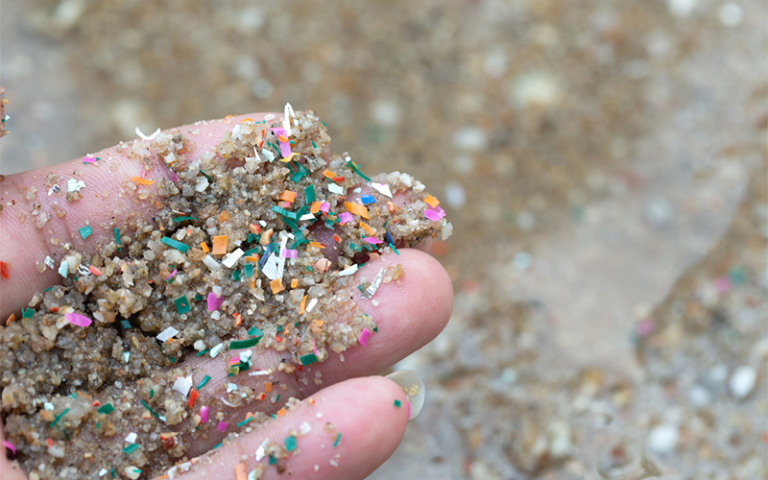Seeking a mathematical method for tracking marine microplastics
Dr Kang Ren (UCL Mechanical Engineering) used UCL-SJTU Strategic Partner Funds to seek a mathematical approach to track the movement of harmful marine microplastics.

9 August 2023
Microplastics are tiny particles of plastic that are found in products such as cosmetics or textiles, or they are created when larger plastics gradually break down. As with all plastics, microplastics do not easily decompose into harmless molecules, and can cause damage to the environment, as well as to human and animal health. Many microplastics find their way into waterways and the ocean, and as such, microplastics have been found in marine life, seafood and drinking water.
In response to this growing problem, Dr Kang Ren wanted to find out if it’s possible to find a mathematical method to predict the movement of microplastics in the ocean. To do this, he partnered with Associate Professor Jing Li at Shanghai Jiao Tong University (SJTU) to explore the interaction between fluids and microplastics.
Understanding the movement of microplastics in fluid
“The issue of microplastics is a very big topic, and a very new topic as well,” Kang said. “There are not extensive studies on the subject, which is pushing us to adopt novel techniques to deal with the problem.”
During this research, Kang and his colleagues wanted to explore some key research questions. This included understanding the physical factors that dominate the interaction between fluids and microplastics. The team also wanted to find out more about which numerical techniques are suitable for studying the transportation of marine microplastics. The idea is that if we can develop a greater understanding of how microplastics travel through water, we may be able to understand where microplastics cluster in the ocean, and even prevent some from reaching the ocean in the first place.
Through this work, the team found that Data Assimilation (DA) holds great potential for forecasting the movement of microplastics in water, and identifying the pollution source by running an adjoint model backward in time. “DA is a rapidly growing discipline, and this technique has been used to tackle many scientific problems in terms of fluid dynamics,” Kang explained. “It can fill up the empty space when we are in possession of some sparse measured data. This has been proven to be a successful tool to deal with flow visualisation, along with the 3D Particle Image Velocimetry (PIV) technique. It’s useful in situations like this too, where it is impossible to track each tiny microplastic particle.”
Expanding the application of the model
Kang and his colleagues are currently testing a hydrodynamic model, which will aid the DA process to give predictions informed by physics. As such, this process will validate the accuracy and validity of the modelling. So far, the model has been used to understand the movement of microplastics in confined spaces such as tubes. “After validating the approaches and modelling, we can further expand our research to unbounded environments and scenarios,” Kang said. “Then we can incorporate DA techniques to improve the predictions we can make from the models, with the help of field measurements.”
Some of the findings of the research so far have been published in journal papers, such as the International Journal for Numerical Methods in Fluids and Physics of Fluids. Some of the work has also been presented at the prestigious international conference, the 38th International Workshop on Water Waves and Floating Bodies. “We have made some significant efforts in studying the flow environment by developing novel numerical approaches,” Kang said. “The study of flow environment will ultimately shed light on the transport of microplastics.”
The opportunity to collaborate with SJTU has also been beneficial. “These funds have provided us with some new facilities, and also enabled us to have some training on new methods and new techniques,” Kang said. “Although the project has ended, it feels like a new start too, because we are planning to apply for further joint funds based on our achievements. It will be very beneficial to our career development in academia.”
Links
- A height function based momentum balance model to simulate contact angle dynamics with hysteresis
- Numerical study of the impact of contact line with hysteresis on the Faraday instability
- Wave interaction with a floating finite rectangular plate in a channel
- Apply to UCL-Shanghai Jiao Tong University Strategic Partner Funds 2023/24
- UCL-SJTU Strategic Partner Funds 2021/22 recipients
- UCL in East Asia
- UCL and China
 Close
Close

